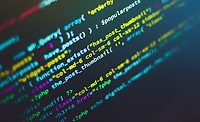How can drones protect businesses, people and assets?

Image licenced under Envato
The next few minutes will uncover the here and now of commercially available drones, the future, and the challenges that need to be overcome to activate the next level of usage. That is to open up the exhilarating world of swarm technology.
Commercially available drones are ubiquitous today. They have countless potential and imaginative uses for entertainment, filmmaking, surveying, mapping, search and rescue, and many other innovative applications. They can be deployed from almost anywhere; they are fast-moving and provide a stable platform to survey or deliver a payload. So, where is this technology going?
As drones get more technically advanced, we will see them used in a wider range of applications, from farming to logistics and policing. But they will need to be integrated into Air Traffic Control before the next level of usage can be activated.
Safety is a major concern with flying drones — a mid-air collision could easily be fatal. Many drones have a vulnerability to hacking and jamming. This causes loss of control or enables hijacking and possibly results in several kilos of a drone falling from the sky in a public place. But when these challenges are overcome, the sky is the limit — literally.
Leading edge research is looking at drone technology for security applications. Use cases, such as intruder detection, surveillance backed by artificial intelligence, and RFID tracking, are the applications of the future.
Police forces are already using drones across the globe for live reconnaissance and situational awareness, but these can be enhanced through integration with artificial intelligence to locate and track a target automatically. RFID tags in mobile assets can be located, intercepted and recovered.
Drones are an inexpensive solution to what were previously cost-prohibitive operations. But what about drone swarms?
A single drone is limited by its flight time. On-board power must be replenished, so the drone must return to the base to recharge or swap batteries. Much of the drone’s flight time is taken up with deployment — taking off, getting to altitude, and arriving at the destination.
But what if the drone could be replaced at the destination? A relay of drones that relieve each other so they can return to base and recharge; return to the swam to relieve another. This keeps the operational function of the drones in the sky for as long as needed, without the limitation of returning to base simultaneously to recharge.
Internet of Drones
Flying multiple drones will need to be coordinated within controlled airspace. The concept of the Internet of Drones (IoD) is connectivity that provides drone control via the internet. The IoD maps the drone’s location and tracks it in 3-dimensional space, providing trajectories for operation. This technology avoids collisions and compensates for changes in the weather.
This technology also connects the transmitted data with applications for real-time analysis, such as artificial intelligence (AI) based surveillance or augmented reality — so we now have drones that can keep a surveillance camera over a target, with a continuous relay of replacements that are coordinated to maintain the operational requirement and support ground-based analysis for as long as needed.
IoD technology allows multiple drones to operate in controlled airspace. This allows the drones to integrate, to operate as a single unit. A cluster of drones can exhibit swarm behavior, the same way as a shoal of fish swims or a flock of birds fly. The ability of an individual drone to detect others, avoid collisions, match velocity and center in the swarm, allows the collective to be more robust and more resilient than a single device.
Each element of a swarm communicates with another, and they react in response to real-time information to maintain their position within the group. The application of external data from the IoD provides the ability for it to interact with the outside world and adjust its behavior to suit.
A swarm leader can be programmed to react to different data, which represents scenarios, in different ways, and any member of the swarm could be the leader. This flexible command structure makes it resilient to attack or failure of an individual drone.
So, we can see that a swarm can replenish itself with power, operate within controlled airspace, maintain its operational function, and react to external influences such as weather or an attack. A swarm is much more robust than a single drone, but how can they protect our businesses, people, and assets?
I’m not predicting that businesses will be deploying swarms for security any time soon, but high-consequence facilities such as nuclear power plants or research facilities might. Military and national security agencies might. Private security companies might — imagine a city in the future that employs a company to operate a detect and track swarm in its airspace.
The swarm could be in the air, permanently providing surveillance, looking for missing people. Let your imagination wander for a bit and see where this could go. But back to the here and now. The IoD is developing, and so are swarm command applications. You can see them in action in aerial displays, drawing pictures in the sky at major events.
Drone swarms could enter the world of physical protection systems soon enough. They will provide surveillance and detection over high-consequence facilities and high-value targets. They will monitor and react to incursions on remote borders. They will be used for search and rescue, and they might be used as part of a Smart City integration.
Looking for a reprint of this article?
From high-res PDFs to custom plaques, order your copy today!





